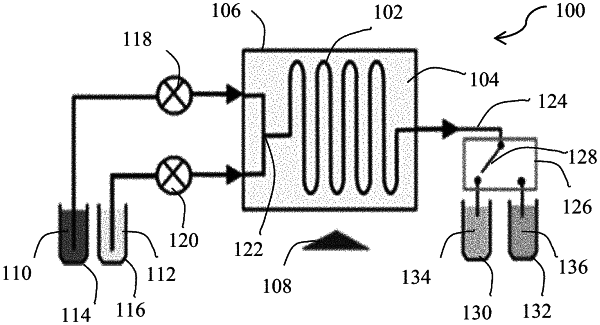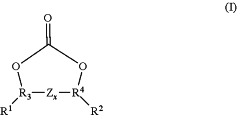| CPC C07D 317/40 (2013.01) [B01J 31/0232 (2013.01); C07C 69/96 (2013.01)] | 16 Claims |

|
1. A continuous process for preparing organic carbonate solvent of Formula (I):
 comprising the steps of:
(a) contacting a first reactant with a reactive carbonyl source in reaction stream containing a catalyst flowing through a continuous flow reactor at a temperature in the range of about 20° C. to about 160° C., and at a flow rate providing a residence time in the range of about 0.1 minute to about 24 hours;
(b) optionally quenching any remaining reactive carbonyl source;
(c) collecting a reactor effluent exiting from the continuous flow reactor;
(d) recovering a crude product from the reactor effluent; and
(e) purifying the crude product to obtain the organic carbonate compound of Formula (I);
wherein:
the reactive carbonyl source is carbon dioxide; and the first reactant is an epoxide of Formula (III):
 the catalyst comprises at least one material selected from the group consisting of a bicyclic amidine, an acid addition salt of a phosphazene, an acid addition salt of a bicyclic guanidine, a quaternary ammonium halide, and a quaternary phosphonium halide; and the catalyst is present in the reaction stream at a concentration of about 1 to 20 mol % relative to the epoxide;
Z is a covalent bond;
x is 1;
R and R1 are the same and are C1 to C4 fluoroalkyl comprising at least one fluoro substituent;
R2 is H;
R3 and R4 both are CH and are directly connected by the covalent bond Z.
|